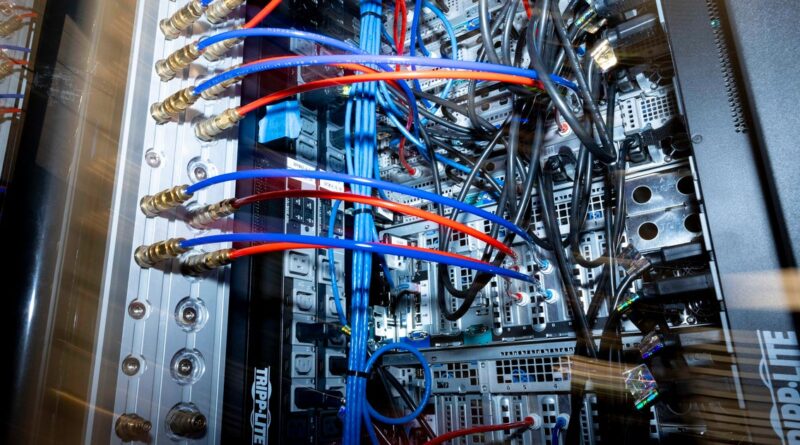The AI revolution is likely to drive up your electricity bill. Here’s why.
New Jersey residents got some bad news earlier this year when the state’s public utilities board warned that their electricity bills could surge up to 20% starting on June 1. A key driver in that rate hike: data centers.
The spread of these large-scale computing facilities across the U.S. amid growing demand for artificial intelligence, data storage and other technology services is projected to increase electricity consumption to record highs in the coming years, according to experts.
A report from Schneider Electric, a company that specializes in digital automation and energy management, projects that electricity demand will increase 16% by 2029, mainly due to the proliferation of data centers. Most data centers rely on the nation’s electrical grid for energy, meaning it will be Americans ratepayers who pick up the tab, Mark Wolfe, executive director of the
National Energy Assistance Directors Association, a group that represents states on energy issues.
“As utilities race to meet skyrocketing demand from AI and cloud computing, they’re building new infrastructure and raising rates, often without transparency or public input,” he told CBS MoneyWatch in an email. “That means higher electricity bills for everyday households, while tech companies benefit from sweetheart deals behind closed doors.”
More data centers, more power
Thousands of data centers now dot the country, with the largest concentrations in Virginia, California and Texas. The number of data centers in the U.S. nearly doubled between 2021 and 2024, according to a report from Environment America, a network of environmental groups.
It’s not just the number of data centers that are expected to rise, but the size. “The trend has been bigger data centers,” Dave Turk, the former deputy secretary of the U.S. Department of Energy, told CBS MoneyWatch. “They tend to be more energy efficient.”
Spurring that expansion is the rapid growth of “generative” AI companies that are consuming vast amounts of electricity to train so-called Large Language Models like ChatGPT and power. AI searches use 10 times more electricity than normal internet searches, according to a study from the Electric Power Research Institute, a nonprofit organization.
“AI is an increasing part of data centers and certainly responsible for increased electricity demand,” Turk said.
Data centers, which contain thousands of computer servers, networking gear and other infrastructure, also require power to cool their systems and keep them from overheating.
Torsten Sløk, chief economist at asset management firm Apollo Global Management, estimates that data centers will require an additional 18 gigawatts of power capacity by 2030. To put that into context, New York City power demand is about 6 gigawatts.
About 4.4% of U.S. electricity went to power data centers in 2023, according to a Department of Energy’s Lawrence Berkeley National Laboratory study. Not all of that demand is related to AI, but it represents a portion, Turk said.
Other factors pushing up prices
The spread of data centers isn’t the only reason U.S. electricity prices are surging. The price of natural gas, inflation, ongoing electrification of buildings and vehicles, and other factors also play an important role. But utilities are factoring the high demand from data centers into their pricing models.
For example, when Dominion Energy, one of the Virginia’s largest utilities, in April proposed a price hike of $8.51 per month in 2026, the company also floated the idea of a “new rate class for high energy users, including data centers.”
Electricity prices have risen 4.5% in the last year, according to recent data from the Labor Department, and are estimated to surge this summer. Energy costs also drift higher if a Republican-backed budget package, dubbed the “big beautiful bill,” is passed and signed into law by President Trump. Analysts from Rhodium Group predict that the bill, which would repeal a slate of tax credits created under the Inflation Reduction Act, could increase a family’s energy expenditures by nearly $400 a year.
Beyond price increases, the heightened energy demand from data centers could also compromise the reliability of the grid, according to experts. In a recent report, the North American Electric Reliability Corp said that facilities that service AI and cryptocurrency companies are being developed at a faster pace than the power plants and transmission lines to support them, “resulting in lower system stability.
PJM, a grid operator in 13 states plus Washington, D.C., cited data center demand as one of the factors that could lead to capacity shortages in its 2025 forecast.





